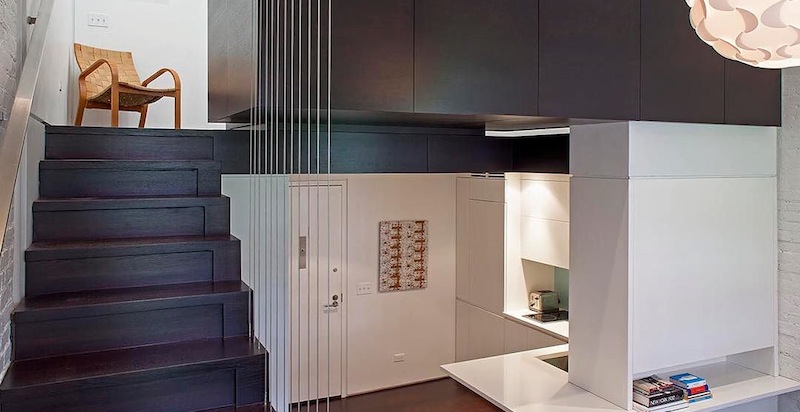New York City has granted waivers to its building codes on some projects to foster the development of micro apartments.
An impetus for this action was to create more housing in a city that has a shortage of affordable units, but the first projects to construct tiny apartments have been oriented to a higher-income clientele. One such building comes with custom-made furniture, a weekly cleaning service, and an app-based “butler” that can arrange dry cleaning and grocery pick up services.
Such high-end developments may lay the ground work for affordable micro-apartment projects by alleviating the stigma associated with tiny living units, some housing experts point out. Some New Yorkers associate micro-apartments with the cramped tenements of the past. But successful luxury projects could provide proof-of-concept for affordable micro-apartments, boosters say.
Critics point out that that a 300 sf unit may be fine for single people, but many of those in need of affordable housing are families that need more space. New York’s City Council is considering a measure to allow micro-apartments to be constructed within affordable housing complexes with conventionally sized units.
Related Stories
| Sep 1, 2011
Project Aims to Automate Code Compliance Assessment
FIATECH, a consortium of owners from the industrial, power, and retail markets that build large structures, launched a project this year to validate the use of automation technology for code compliance assessment, and to accelerate the regulatory approval process using building models. Long-term objectives include the development of an extensive, open-source rule set library that is approved by industry and regulatory bodies for use by technology developers and code officials.
| Sep 1, 2011
EPA Says Additional Lead Paint Cleaning Rules Not Necessary
The EPA has concluded that current Lead: Renovation, Repair, and Painting Program (LRRP) cleaning requirements and lead-safe work regulations are sufficient to protect the public from lead dust hazards. “Our members have been instrumental in contacting legislators to detail the detrimental impact of the current LRRP," says Richard Walker, American Architectural Manufacturers Association’s president and CEO. “This collective industry voice has prompted the EPA to make the responsible decision to refrain from adding further, unnecessary costs to homeowners under the current economic climate."http://www.aamanet.org/news/1/10/0/all/603/aama-commends-its-members-congress-for-vacating-lrrp-clearance-rule
| Aug 11, 2010
Best AEC Firms of 2011/12
Later this year, we will launch Best AEC Firms 2012. We’re looking for firms that create truly positive workplaces for their AEC professionals and support staff. Keep an eye on this page for entry information. +







